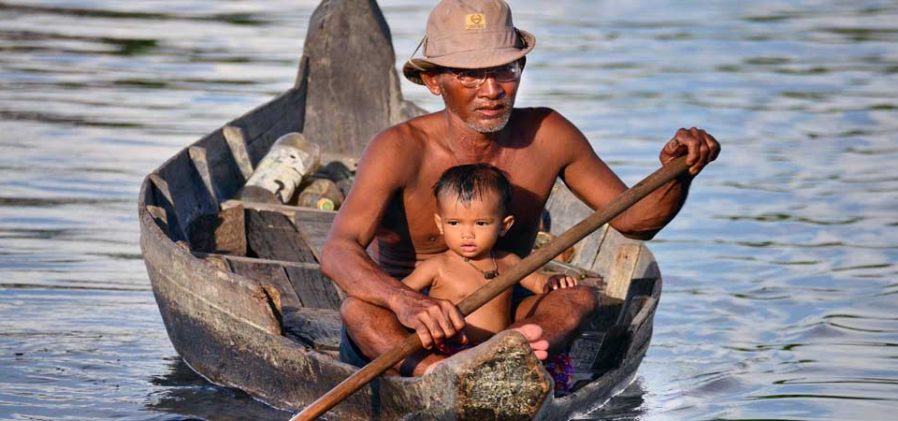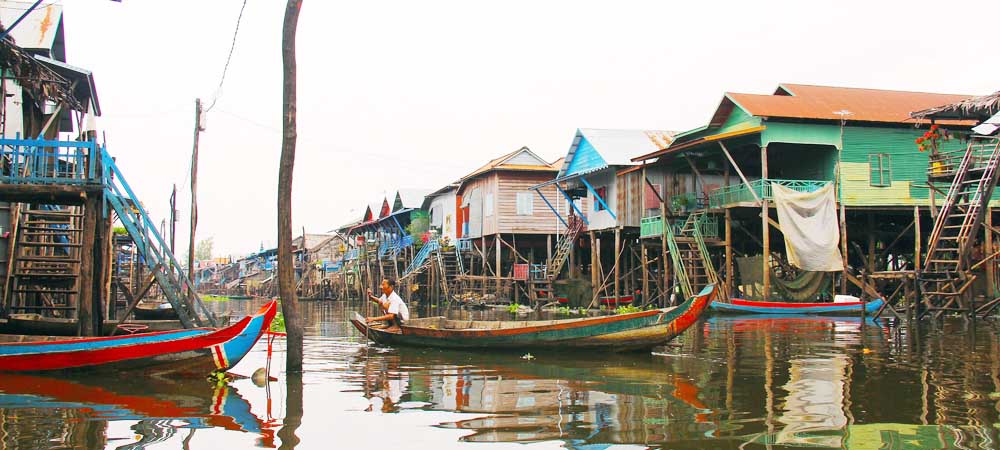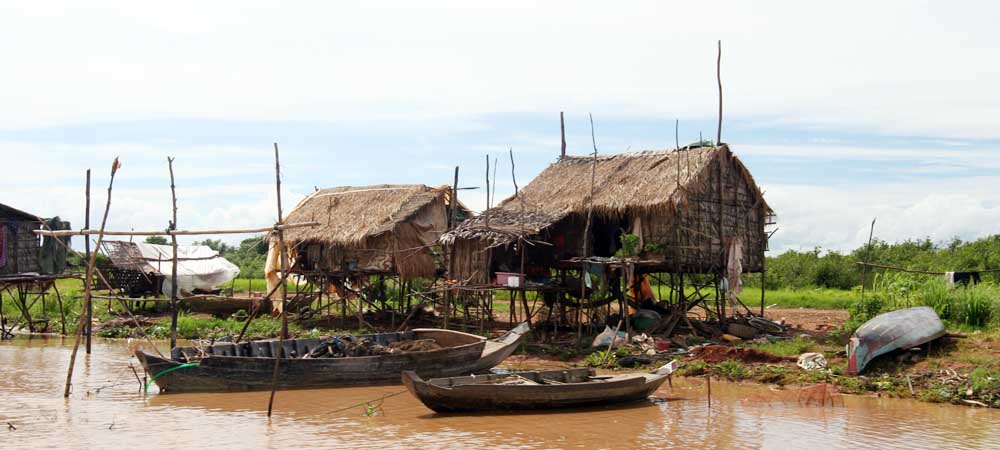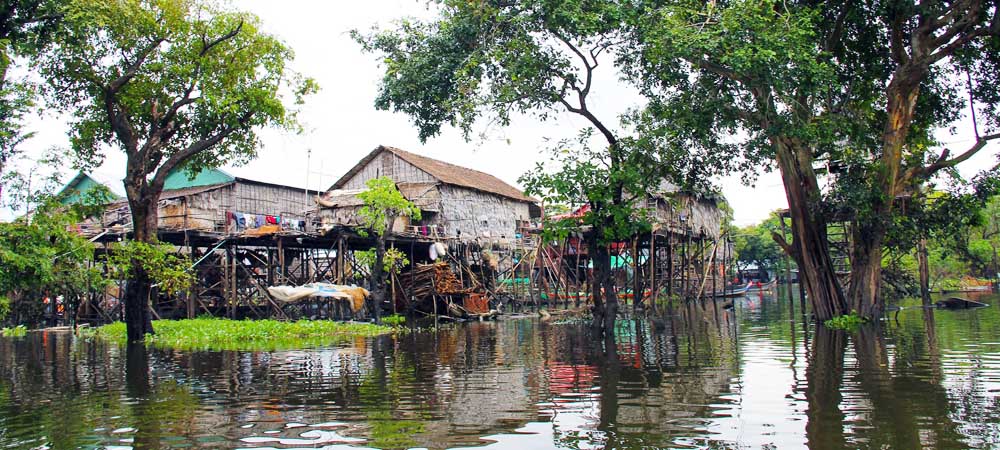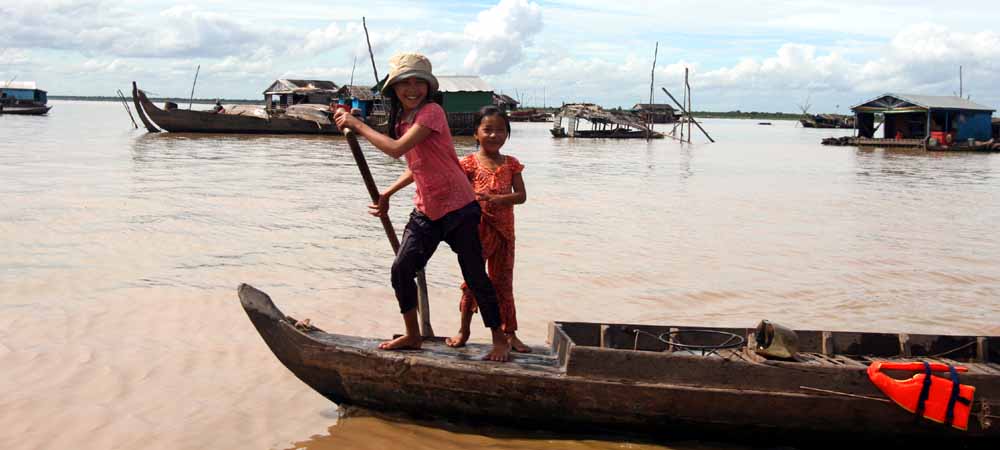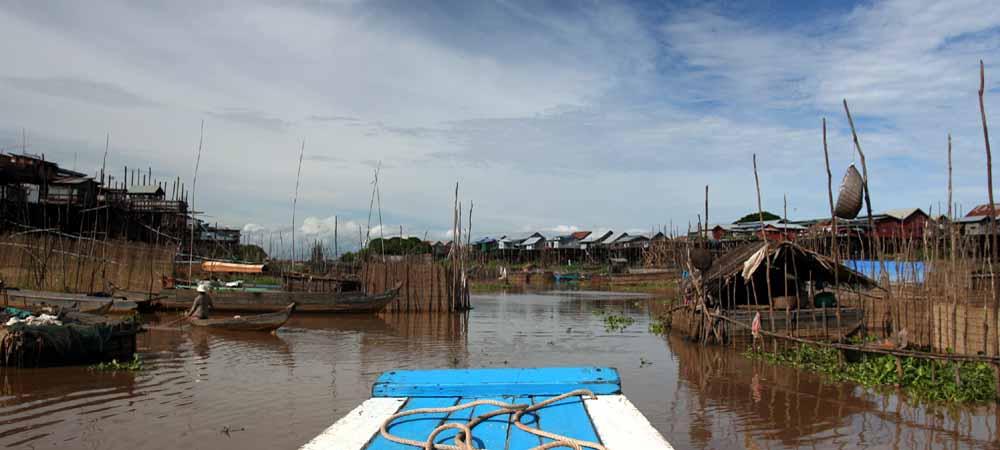Cambodia has long been a country of many wonders that attract travelers from all over the world. From the dark and sordid history of Phnom Penh to the ancient city of Angkor Wat and everything in between, it’s no wonder so many people flock to this Southeast Asian nation to experience all it has to offer. Whether you’re an avid and experienced traveler or you’re new to the travelling game, a tour of Cambodia with a company like Explorient to this varied and unique region will whet your appetite for exploring the wider region even further.
While the Mekong River is one of the most prominent bodies of water in South East Asia, each country has its own special lakes and rivers within itself that provide its residents’ places to call home, areas to fish or even farm. Tonle Sap Lake in Cambodia is one such place, and when viewed on a map, it sits right at the heart center of the country, providing those who call the lakeshore home everything they need to not just survive, but thrive.
Situated directly south of Siem Reap and northwest of Phnom Penh, Tonle Sap Lake is an enormous body of water, lined on its shores with small working villages with deep-rooted histories that have been inhabited for generations. The beautiful and impressive Roniem Forest sits on the southwest shore, inviting travelers and locals alike to explore the lush, green vegetation and terraced hillsides of rice paddies and farming that come with such fertile soil. Set amid a backdrop of mountains in the distance, there’s something to be said about this region of the lake, but don’t take it from us – add a trip to the forest to any itinerary you may choose through Explorient, such as our Indochina Spectacular tour.
Tonle Sap Lake History and Formation
Tonle Sap in Khmer literally means “Large Lake not salty” and is occasionally translated as “Great Lake”, giving the name to the Great Lake system of the region which provides freshwater to the larger area as a whole, allowing for floodplains and even deciduous forests. The Tonle Sap Lake feeds into the Tonle Sap River which acts as a tributary into the Mekong River that eventually winds its way through the capital city of Phnom Penh.
Tonle Sap Lake sits at the base of a geological depression in the earth, a direct result of the combining of the Eurasian and Indian tectonic plates. The formation of the lake itself is unique in the sense that it provides geologists almost a literal snapshot of the ever-shifting Mekong Basin. The water levels of Tonle Sap vary dramatically throughout the year, with lower levels in the dry season and higher levels following the monsoon season which tends to occur in September and October. Plan your adventure around these months to see different types of life in terms of the fishing and agriculture that can be seen around the lake when you’re on Explorient’s Cambodia Impressions tour.
Interestingly, the formation of the lake itself and its high water levels in the wet season has largely provided subsistence to huge swathes of civilization, including the Angkor civilization which existed long before the industrialized era which would have provided them more options in terms of accessing water from the Tonle Sap lake system. The floodplains, however, which are largely influenced by the lake itself, helped this civilization thrive in the depths of the jungle.
Despite the fact that the lake lies entirely within the borders of Cambodia, it’s a keen point of interest to know that many of the lake’s inhabitants are ethnically Vietnamese. It’s a strange existence for those who live it – constantly on the fringes of Cambodian society, never quite being accepted. Many of those Vietnamese living on the lake have both Viet and Khmer names, moving between them effortlessly, being technically of both worlds. In fact, the people here are somewhat discriminated against by the Khmer Cambodians, with the word ‘yuon’ used to describe the Vietnamese that inhabit the lake, a word that can be roughly translated to mean ‘savage’.
Many of the Vietnamese came here many years ago, most in the 1800s when the French brought Vietnamese workers into Cambodia for various farming jobs including as labourers on rubber plantations. The result is a diaspora of Vietnamese in Cambodia who have been left in a state of uncertain limbo for decades, the undesirable victims at the hands of various governments that use them as pawns and can both grant or rescind rights to the Viet populace of Cambodia depending on various political climates. Essentially, the Vietnamese on Tonle Sap and the surrounding area have become pawns of the political spectrum, and struggle to retain what little they have in terms of rights to their own homes and the ability to fish the lake to provide for their families.
Agriculture and Life
The access of freshwater in the center of relatively land-locked Cambodia has always been something of a marvel, but with the heavy monsoon rains and the deep depression of Tonle Sap Lake, accessing this life source has always been easy. Agriculture has built up around the lake, mainly with the use of floodplains to farm rice, but fishing is one of the biggest mainstays around the lake itself. Strict rules have been in place for decades now, dating back to the 1980s in relation to ensuring the ongoing sustainability in terms of fish stocks on the lake, whereby fishermen are forbidden from fishing during the heavy monsoon season, which is when fish mating is in its prime to ensure fish stocks continue to be able to supply the lake and its residents with fish and food.
Tonle Sap Lake is one of the primary producers and suppliers of fish throughout Cambodia, with a number of the fishermen being of Vietnamese origin. If you come across a fish market in Cambodia, chances are that the fish has come from the Tonle Sap Lake or river, especially during the drier seasons.
Fishing on the lake is generally quite straightforward and uses an interesting network of floating houses with cone-shaped nets to catch the fish. As fishing is only allowed in the drier seasons, these nets help to maximize the catching of fish that can be carried away as the floodwaters from the monsoon season recede. The result is the catching of ten thousand fish which are typically turned into a condiment called prahok, which can complement almost any southeast Asian dishes. Three days of fishing in this manner can catch enough fish to make a year’s worth of this special condiment, which can sometimes be distributed to shops beyond the region. You will likely find this delicious condiment in most restaurants and dishes throughout Cambodia during your Spectacular Far East tour with Explorient.
An interesting point to note about the fishermen that work on Tonle Sap is that they are largely Buddhist and as a result, they have specific rules about the taking of lives. This means that the fishermen don’t physically kill the fish themselves, and instead wait for the fish to die naturally once removed from the waters of the lake. After the fishing season is through, they will typically go to the monastery or temple in their village to ask for cleansing and purification. On top of this, they use all parts of the fish for their own needs and for-profit, often fishing only enough to feed their families and to barter for other goods like rice. The result is a unique system where the people work together to ensure everyone has enough of everything for families to live through the year. Salting the fish is a popular form of preservation, while fish heads are ground up and used for fertilizer.
Activities
Much of the area around Tonle Sap has become part of a government-sanctioned biosphere reserve, helping to conserve and protect the delicate ecosystem that the lake and surrounding regions thrive off of. Since 2001 the government has been working with the area to increase education and support around the preservation of the lake, the culture of the inhabitants and the environment. As much of the fish in Cambodia comes from these very waters, it’s imperative to the continued health and wellness of all Cambodians that the fish stocks are allowed to replenish and stay strong, along with the continued preservation of the lands around the area to retain their original shapes, design, and trees and not to be cleared for the use of farming.
Visitors to the region can tour many of the villages that make the lakeshore (or the actual lake itself) their home. There are a number of villages that are either designed as floating villages with houses that sit atop the water or are built on stilts to protect them from flooding from the heavy rains. The best way to include a visit to a floating village is to book one of Explorient’s private Cambodia tours which include a boat trip to the village of Kampong Kleang, a short one hour drive from Siem Reap to this unique and beautiful floating village on Tonle Sap Lake.
Another excellent place to visit around the lake that we have already mentioned is the Roniem Forest, a beautiful expanse of lush greenery, vegetation and more. This unique area is home to some of the most gorgeous endemic flora and fauna in the region, and while it’s a bit of a hike from both Siem Reap and Phnom Penh, if you’re staying at one of the nearby towns such as Krong Pursat or Krong Battambang, it makes a great stop off to see the ecosystem and life of Tonle Sap in all its glory.

